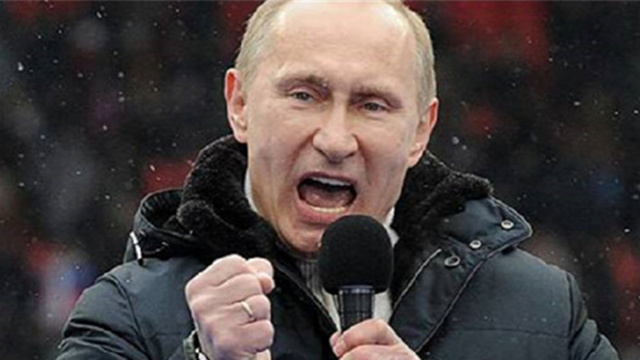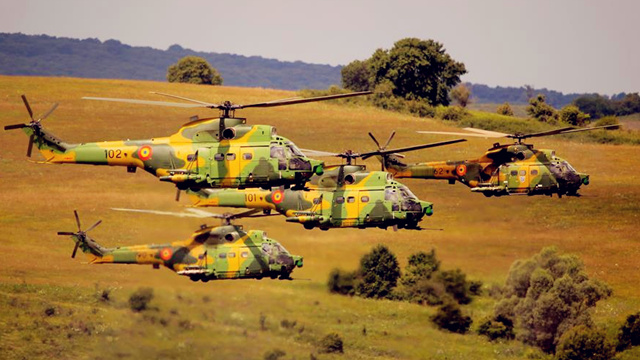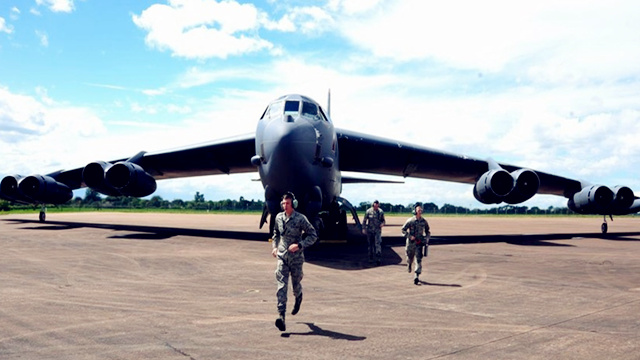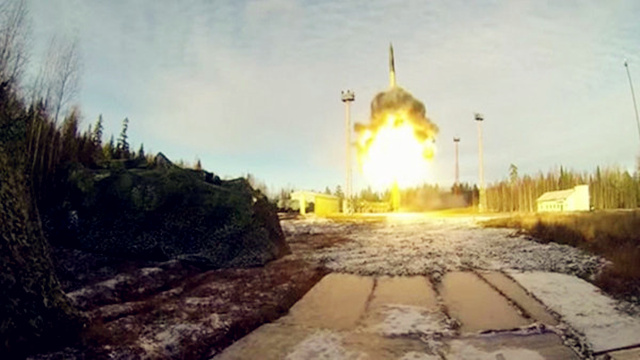CCTV News:November 4th is Russian People’s Unity Day. Russian President Vladimir Putin said in a speech in the Kremlin that unity, patriotism and not accepting external pressure are the innate qualities and personalities of the Russian people.
Putin said that the Russian people have always adhered to unity and patriotism, whether in times of severe tests or when solving major development tasks. Loyalty to the motherland and not accepting external pressure are the innate "genetic and cultural codes" of the Russian people.

Putin (data map)
"People’s Solidarity Day" was set up to commemorate the Russian Rebels’ expulsion of Polish troops from the Principality of Moscow in 1612. This incident promoted the end of the "chaotic era" in Russia in the 17th century and symbolized the unity of the Russian people.
Russian expert: NATO’s relations with Russia will only deteriorate in the future.
On October 9, local time, NATO Secretary General Stoltenberg released a heavy news at the NATO parliamentary assembly in Bucharest, saying that a new force would be formed in Romania to contain Russia’s military presence in the Black Sea region.
This new unit is mainly composed of Romanian soldiers, including soldiers from nine other NATO member countries such as Canada and Italy, with a maximum of 4,000 people. The new troops will complement the 900 American soldiers currently in Romania and strengthen NATO’s military strength in the Black Sea region. In addition, NATO will also increase the frequency of visits to Romanian and Bulgarian ports and increase the number of exercises.
Stoltenberg said that NATO’s expansion of its military presence in the East Wing aims to adapt to new security challenges and improve its ability to respond to threats. NATO troops in Estonia, Lithuania, Latvia and Poland are all in a "combat state". He also stressed the importance of NATO’s military presence in the Black Sea region.
However, Stoltenberg also said that NATO does not want to isolate Russia, nor does it want a "new cold war". NATO’s actions are entirely for defense rather than attack.
NATO will hold a total of 18 military exercises in the Black Sea region this year, and the scale has expanded compared with last year. The largest exercise — — "Saber Guardian 2017" featured about 25,000 soldiers from 22 NATO member countries and partner countries. The Russian side accused NATO of trying to build a siege against Russia and threatening regional stability.

NATO "Saber Guardian" exercise
Stoltenberg recently stated many times on the relations between NATO and Russia that NATO will continue to work hard to improve relations with Russia. However, Moscow experts believe that Stoltenberg’s remarks about efforts to improve relations with Russia are platitudes, and that’s all. NATO has not taken any practical measures. He predicts that relations between NATO and Russia will only deteriorate in the next few years, and even does not rule out that limited military conflicts may break out between the two sides.
[US-Russian strategic confrontation reached a high point? 】 US Defense Minister and Vice President visited nuclear arsenals one after another.
Minot Air Force Base, located in North Dakota, USA, is one of the bases of American B-52 bombers and one of the largest nuclear arsenals in the United States. Following the visit of US Secretary of Defense Matisse on September 13th, US Vice President Burns visited the base again on October 27th.
Burns said: "Minot Air Force Base has 26 B-52 bombers and 150 intercontinental ballistic missiles, which are in the United States ‘ Nuclear triangle ’ You are the only base where both space-based and land-based nuclear forces are deployed. Minot Air Force Base is crucial to the implementation of the global strike order. It will provide strategic deterrence, global strike and combat support at any time and anywhere. "

Us B-52 bomber
The "nuclear triangle" mentioned by Burns is the abbreviation of sea-based, land-based and air-based nuclear weapons launching methods, and Minot Air Force Base is the only military base in the United States where strategic bombers and land-based intercontinental ballistic missiles are deployed at the same time, and it is also one of the largest nuclear arsenals in the United States. On the same day, Burns inspected the 91st intercontinental ballistic missile unit of the US Air Force stationed at the base, which was mainly responsible for the launch of the "Militia -3" intercontinental ballistic missile. At present, one-third of the 400 "militia -3" owned by the United States are deployed at this base.
On September 13th, local time, US Secretary of Defense Matisse also inspected the base. He inspected the missile warning facilities and nuclear arsenal, and personally went to the "Militia -3" missile launch control room. Matisse stressed that in order to ensure nuclear deterrence, the United States must have a trinity nuclear weapons system of land, sea and air. In August this year, Matisse also inspected the Kitshep Naval Base with sea-based nuclear weapons delivery capability and completed the inspection of the "nuclear triangle".
Regarding the actions of the United States in nuclear weapons, as early as the 23rd of this month, a number of American media suddenly broke the news that the US Air Force was preparing to restart the B-52H strategic bomber and resume the 24-hour alert duty during the Cold War. This news quickly attracted the attention of the outside world, because it was an "unprecedented state" since the end of the Cold War. The US Air Force issued a statement on the 24th, saying that the plan to restore the 24-hour alert of the B-52H does exist, but it is not "imminent".
[US-Russian strategic confrontation reached a high point? 】 Putin personally led the Russian army’s land, sea and air nuclear weapons exercise
The United States develops its nuclear arsenal, and Russia does not show weakness. Two days ago, Russia held the first joint exercise of land, sea and air nuclear weapons in five years. Nuclear submarines, land-based intercontinental missiles and strategic bombers tested missiles on the same day, and there was a lot of movement.
In this "Trinity" nuclear exercise, the main forces of Russia’s nuclear weapons throwing platforms on land, sea and air were all unveiled, and the movement was not small. Russian President Vladimir Putin personally directed and launched four ballistic missiles.
Land-based nuclear power: The "White Poplar" intercontinental ballistic missile was launched from the Plesetsk space launch site and accurately hit the target of the Kula shooting range in Kamchatka Peninsula.

Russian military test-fired "Baiyang" intercontinental ballistic missile (data map)
Space-based nuclear forces: Tu -160, Tu -95MS and Tu -22M3 long-range strategic bombers took off from three different airports in eastern, southwestern and western Russia, and fired several cruise missiles at the shooting ranges in kamchatka peninsula, far east Russia, Komi Republic in northwest Russia and western Kazakhstan, respectively, and hit the targets accurately.
In terms of sea-based nuclear power, the Pacific Fleet nuclear submarine completed two ballistic missiles volley from the waters of Okhotsk Sea to the shooting range of Arkhangelsk State, while the Northern Fleet submarine launched one ballistic missile from the waters of Barents Sea to the shooting range of Kula.
Peskov, press secretary of the Russian President, said that the nuclear trinity test was a normal and routine process, which had nothing to do with international events.
In addition to test-firing active intercontinental missiles, Russia is still developing another "deadly weapon". According to relevant sources of Russian Defense Ministry, Russia plans to conduct two drop tests on the heavy liquid fuel RS-28 "sarmat" intercontinental ballistic missile at Plesetsk space launch site before the end of 2017. According to public information, sarmat will be the most powerful nuclear missile in the world after its service — — Its maximum range can reach 16,000 kilometers, and it can carry 10-15 sub-missile heads with a hit accuracy of 150-200 meters. General Karakayev, the Russian strategic missile force, said in December last year that Russia plans to put the "sarmat" intercontinental ballistic missile into service in 2019-2020, which can restrain the anti-missile system of the United States today, in the future and in the further future, and can "tear up" the anti-missile system of the United States.